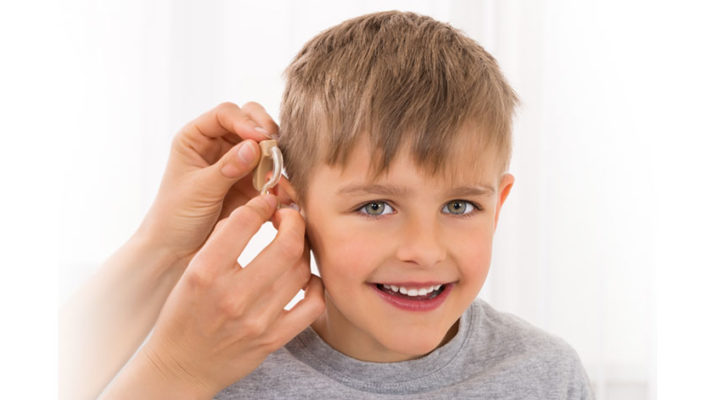Among children aged 6 to 19, 14.9% have some level of hearing loss
By Deborah Jeanne Sergeant
Every baby born in a US hospital receives a hearing screening. Of those, only a fraction — .16% — have some level of hearing loss, according to the Centers for Disease Control and Prevention.
But among children aged 6 to 19, 14.9% have some level of hearing loss because of later onset hearing issues.
Addressing children’s communication needs as young as possible is very important and bears lifelong effects.
“From the moment children are born, they begin to take in the world around them in many different ways, including through auditory input,” said Kristin Augustin, audiologist with UR Medicine Audiology.
This input lays the foundation for language, communication, understanding emotions and forming relationships. Missing all of this without any means of intervention to improve communication can delay children’s learning, cognitive abilities, social development and eventual employment opportunities.
That is why providers typically suggest fitting with hearing aids those babies who would benefit from the devices.
“It is important to also note that, while hearing aids are most frequently used to provide access to sound to allow children with hearing loss the ability to develop spoken language, this is not always the case,” Augustin said. “Children with severe to profound degrees of hearing loss may not benefit from hearing aids and may be candidates for cochlear implants instead.
“Alternatively, some families will choose to have their children with severe to profound hearing loss learn and use sign language. No matter the suggested or chosen course of treatment, the goal for all children born with hearing loss is to allow them to develop language and a means of communication as soon as possible.”
However children acquire communication skills, it’s important to start early. If they do so through hearing, “they need to have their hearing loss addressed very early so their brains can adapt to how they hear,” said Michelle Gross, member of the Hearing Loss Association of America Rochester Chapter and a resident of Brighton. “For adults with hearing loss, their speech pattern is already developed.”
Gross lost most of her hearing when she was 8 years old. She thinks that hearing loss is a bigger deal to hearing parents than to the child who has always worn hearing aids. She added that years ago, wearing hearing aids felt stigmatizing once children hit the pre-teen years.
“Nowadays, it’s still considered ‘different’ to wear hearing aids, but in a positive way, because everyone has something hanging out of their ears,” Gross said.
Though hearing aids are different in design and purpose than ear buds and headsets, the latter have helped break down stigma.
Many objective tests exist for testing a baby for hearing loss.
Ron D’Angelo, New York state licensed audiologist with Clear Choice Hearing and Balance in Brighton and Greece, said these can include placing electrodes on the head to measure the response of the auditory nerve.
“The beauty is the ears are still pulling in sound and the brain is responding whether they’re awake or not,” D’Angelo said.
Hearing aids for babies differ quite a bit from those intended for adults. To make them appeal to children, hearing aids come in bright colors and patterns, similar to the effect of fun options for glasses.
They also have low battery lights so parents know when to charge or change the battery. Their tamper-resistant battery doors help prevent ingestion.
Children’s hearing aids are also compatible with hearing assistive technology (HAT) systems that allow parents’ or teachers’ voices to transmit directly from a microphone into the hearing aid, which reduces the effect of ambient noise interfering with the message. Manufacturers make children’s hearing aids more durable than their adult counterparts.
Accessories can help keep hearing aids on children. Many parents use a clip similar to that of a pacifier to keep hearing aids together and attached to the infant’s clothing so they don’t get lost. Hats and headbands can also keep a child’s hearing aids in place, as can creating a well-fitting hearing aid.
Fitting hearing aids is also different for children. Parents are more involved for pediatric fittings and device care, especially for infants who are both incapable of expressing their experience accurately and lack normal hearing experience for comparison.
“Little ones have a harder time keeping hearing aids in their ears,” said Christine Tirk, founder of Clear Choice Hearing and Balance and a state licensed hearing instrument specialist.
Tirk added that usually, infants receive a full prescription, unlike adults, who have to slowly adjust to hearing aids. Infants are seen every three to four months for adjustments as they grow. By about age 5 for most children, their ear canals are at adult size.

